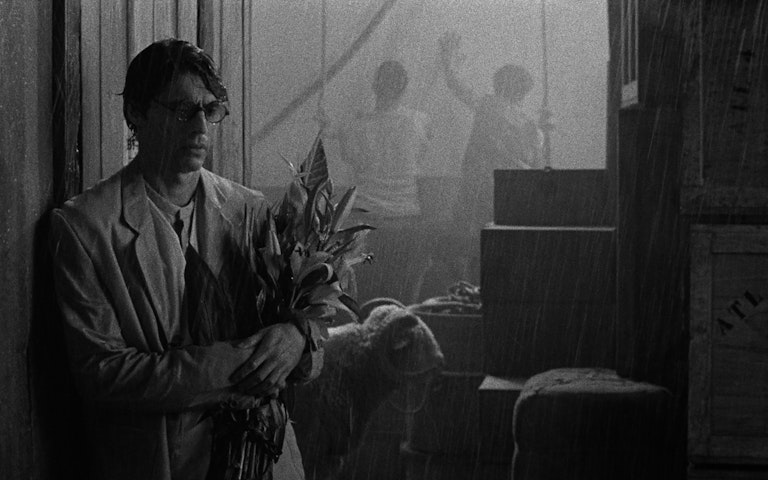Young Critics review: Des Teufels Bad

Review by Ana Đošev
Horror cinema has been questioning the limitations of human cruelty since the earliest days of the seventh art. Practitioners of the genre often find the perfect setting for this exploration in isolated societies and the way their shared morals and daily rituals twist and turn over time. This entails certain pitfalls, but these can be evaded, as shown by Austrian filmmaking pair Veronika Franz and Severin Fiala in their latest foray into the domain of historical horror, The Devil’s Bath.
Loosely based on a series of historical events about the phenomenon of female suicide by proxy, the film tells the chilling tale of Agnes (Anja Plaschg), a young bride-to-be, living in a remote village in 18th century upper Austria, where the harsh rocky terrain is matched by a certain kind of remorselessness that seems to be a shared trait amongst its inhabitants. As part of an archaic wedding tradition, Agnes’s husband Wolf (David Scheid) is blindfolded and takes aim at a rooster with a large weapon, while the guests are cheering on the slaughter of the unassuming animal. After a successful hit, they clasp hands and dance to the crinkling noise of the hurdy-gurdy, jumping around on the blood-drenched earth. Celebration soon comes to an end, as the maiden, crowned with flowers, is drawn into the actuality of marital duties.
Agnes is brought into an obscure, desolate house and treated poorly by her malicious mother-in-law. Feeling isolated from her new family, she revels in her love of nature and her virtuous fantasies about motherhood. Agnes’s crippling psychosomatic state amplifies the movie’s audio-visual setup, her fragile and illusionary perception toying with the viewer’s expectations of a supernatural outcome. One of the most prominent atmospheric tools is the original soundtrack, courtesy of main actress Anja Plaschg, blending elements of sacral chants, folklore and pastoral ambient noise. These and other elements might make one believe The Devil’s Bath is going the route of a stereotypical horror picture. However, Franz and Fiala let the brutality of rural life speak for itself, allowing the camera to linger on heads cut off, humans and animals alike being subjected to the sheer physical pain of existence.
Martin Gschlacht’s cinematography makes the natural landscape appear sacred, as Agnes finds comfort in the green meadows of the savage forest. The glistening moon and nature’s woody and amber tones contrast with the profanity and sturdiness of her sombre house and the chilly interior of the local chapel where the heroine adores a wax figure of the infant Christ, transfixing on the innocence of a child as an escape from the barbarity of her surroundings. Superstition and blind faith, which usually bring forth misfortune and fright in folk horror, here represent a peaceful oasis for Agnes.
The role of the woman is, indeed, made into that of a martyr, Agnes’s ordeal recalling that of figures like Joan of Arc, with their shared noble acceptance of the ascent to eternal life. If one was expecting a two-hour unhinged blood feast, The Devil’s Bath would leave you rather disappointed, although it does revel in the crudeness of the Germanic townsfolk at the very end, leaving little to be imagined about their connection with their pagan roots. Nevertheless, avoiding exploitation, The Devil’s Bath elegantly incorporates a contemporary interpretation of historical womanhood, without interrupting its horrific heartbeat.
Ana Đošev
As a 21-year-old musicology student and cinephile, "interdisciplinary" has been the keyword of my film criticism journey so far. Currently writing for the Serbian movie critic platform Filmoskopija, I do reviews and essays while also gaining hands-on experience at local film festivals. Believing that every creative outlet deserves a thoughtful approach, I don’t shy away from the campy and sometimes banal world of genre cinema, with a particular passion for horror films. My background in musical performance and theory fuels my writing, blending different artistic and cultural influences. For me, [film] criticism is all about bridging gaps between unthinkable opposites.


